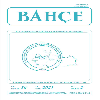"Moralı" Trabzonhurması (Diospyros kaki L.) meyvesinin burukluğunun giderilmesinde kuru buz uygulamasının etkisi1
Bu araştırma 2000-2002 yıllarında Atatürk Bahçe Kültürleri Merkez Araştırma Enstitüsü Hasat Sonrası Fizyolojisi Laboratuvarında yapılmıştır. Deneme materyali o-larak buruk bir tip olan "'Morali' trabzonhurması meyvesi kullanılmıştır. Araştırmada kuru buz (katı karbondioksit) uygulamasıyla buruk 'Morali' trabzonhurması meyvele-rinin olgunlaştırılırla olanakları araştırılmıştır. Trabzonhurması meyveleri optimum derim olumunda derildikten hemen sonra 30 it' lik hücrelere 20'şer meyve koyularak 24 ve 48 saat süreyle kuru buz (% 60, % 80, %90) uygulanmıştır. Uygulamanın meyve eti sertliğine (kg), meyvenin suda çözünür kuru madde (SÇKM) içeriğine %, çözünebilir tanen (mg/lt) miktarlarındaki değişimlere etkisi incelenmiştir. Yapılan olgunlaştırma çalışmasının, meyve eti sertliği, SÇKM, çözünebilir tanen içeriğine (mg/lt) etkisi incelendiğinde en başarılı uygulamanın 24 saat süreyle % 90 kuru buz uygulaması sonunda elde edildiği görülmüştür. Uygulama sonunda burukluğa neden olan çözünebilir tanenin burukluğun kaybolması anlamına gelen çözünemeyen tanen formuna dönüştüğü görülmüştür. Yapılan olgunlaştırma çalışması sonucunda, buruk 'Morali' meyvesi derimden 24 saat sonra kalitesinden hiçbir şey kaybetmeden yeme olumuna gelmiştir. Fakat bazı kuru buz uygulama dozlarının (%80 ve %90) uygulama süresi 48 saate uzatıldığında bazı meyvelerin meyve kabuğunda $CO_2$ zararı gözlenmiştir.
Effects of dry ice treatment on removal of astringency from persimmon fruit (diospyros kaki L. Moralı)
This experiment was carried out in 2000-2002 at the Postharvest Physiology Laboratory of the Atatürk Central Horticultural Research Institute. Astringent 'Morah' persimmon fruit type was used as the fruit materials. Purpose of this study was to remove astringency from 'Morali' persimmon type fruit by dry ice treatment. Fruits were harvested at optimum harvest time. 20 fruits were inserted into 30 It chamber, and fruits were treated for 24 and 48 hour (90%, 80%, 60% and control) with dry ice then chamber was closed.In this study, effect of different dozes of dry ice on soluble tannin content (mg/lt), total soluble solids content (%) and fruit firmness (kg) was determined. Subsequent application of 90% CO2 for 24 hr was effective when fruit firmness, total soluble solids content, tannin content and shelf life were considered. These treatments caused dramatically reduction of soluble tannin to insoluble tannin forms which means a 'nonastringent' fruit. If application duration exceeded 48 hrs, % 90,% 80 concentration of dry ice treatment would cause external $CO_2$ damage on some fruits. But, shortening the dry ice treatment to 24 hrs appears to have solved this problem.
___
- 1. Anonim, 1983. Gıda Maddeleri Muayene ve Analiz Metotları. Tarım Orman ve Köyişleri Bakanlığı Koruma Kontrol Genel Müdürlüğü. Yayın No: 65, ANKARA: s-596-597.
- 2. Ren-Arie, R., Zutkhi, Y., Sonego, L. and J. Klein, 1991. Modified Atmosphere Packaging for Long-Term Storage of Astringent Persimmons. Postharvest Biology and Technology 1(1991): 169-179.
- 3. Ben-Arie, R. and L. Sonego, 1998. Temperature Affects Astringency Removal and Recurrence in Persimmon. Institute for Technology and Storage of Agricultural Products. Scientific Activities 1993-1996, Abst., No: 260, Department of Scientific Publication The Volcani Center, Bet Dagan, Israel.
- 4. Ben-Arie, R. and Y. Zutkhi, 1998. Removal of Astringency from Persimmon and Controlled Atmosphere Storage. Institute for Technology and Storage of Agricultural Products. Scientific Activities 1993-1996, Abst., No: 260, Department of Scientific Publication The Volcani Center, Bet Dagan, Israel.
- 5. Çelik, A. ve A. Yılmaz, 1995. Trabzonhurmasının (Cv. Hachiya) Değişik Sıcaklık Derecelerinde Olgunlaştırılması. II. Ulusal Bahçe Bitkileri Sempozyumu, Adana. s.600-604.
- 6. Itoo, S., 1971. The Persimmon. Biochemistry of Fruit and Their Products. Vol: 2. (Ed: A. C. Hulme). Academic Press. London, pp: 281-301.
- 7. Ittah, Y., 1993. Sugar Content Changes in Persimmon Fruits (Diospyros kaki L.) During Artificial Ripening with CO2: A Possible Connection to Deastringency Mechanisms. Food Chemistry 48(1993): 25-29.
- 8. Jackson, D., 1986. Persimmon. Temperate and Subtropical Fruit Production. pp:251-255.9. Kitagawa,- H. and P.G. Glucina, 1984.
- 9.Persimmon Culture in New Zealand. Science Information Publishing Center, DSIR, Wellington, pp: 59-60.
- 10. Nakamura, M., Y. Soma, T. Akagawa, I. Matsuoka, K. Sunagawa, T. Kato and F. Kawakami, 1995. Quality of Persimmon Fruit Fumigated with Methyl Bromide and Packed in Various Types Films. Research Bulletin of Plant Protection Service, Japan. (31): 1-8.
- 11.Onur, S., 1990. Trabzonhurması. Derim 7(1): 4.46.
- 12. Oshida M., K. Yonemari and A. Sugiura, 1996. On The Nature of Coagulated Tannins in Astringent-Type Persimmon Fruit After an Artificial Treatment of Astringency Removal. Postharvest Biology and Technology 8(1996): 317-327.
- 13. Pesis, E., A. Levi and R. Ben-Arie, 1986. Deastringency of Persimmon Fruit by Creating a Modified Atmosphere in Polyethylene Bags. Journal of Food Science 51(4): 1014-1016.
- 14. Sonego, L. and R. Ben Arie 1998. On The Mode öf Astringency Removal From Persimmon and Its Reversibility. Scientific Activities 1993-1996. Special Publication Abst. No: 260 Department of Scientific Publication. The Volcani Center, Bet Dagan, Israel.
- 15. Sugiura, A., 1997. Keynote Address. 7th Int. Persimmon Sym. Acta Hort. 436: 15-16.
- 16. Taira, S., M. Ono and N. Matsumoto, 1997. Reduction of Persimmon Astringency by Complex Formation Between Pectin and Tannins. Postharvest Biology and Technology 12(3): 265-271.
- 17. Wright, K.P. and A. Kader, 1996. Effect of Slicing and Controlled-Atmosphere Storage the Ascorbate Content and Quality of Strawberries and Persimmon. Postharvest Biology and Technology 10: 39-48.
- ISSN: 1300-8943
- Yayın Aralığı: Yılda 2 Sayı
- Başlangıç: 1968
- Yayıncı: Atatürk Bahçe Kültürleri Merkez Araştırma Enstitüsü
Sayıdaki Diğer Makaleler
M9 ve MM106 Anacı Üzerine Aşılı Granny Smith Elma Ağaçlarında Kimyasal Seyreltme
Wolbachia Bakterileri ve Entomolojideki Yeri
Nurdan TOPAKÇI, Hüseyin GÖÇMEN
Hatay İli Amik Ovası ve Yayladağında yetiştirilen bazı çilek çeşitlerinde renklenme durumları1
Emine ÖZDEMİR, Filiz GİDEMEN, Metin ŞEHİTOĞLU, Kazım GÜNDÜZ
Farklı kırmjızı turp çeşitlerinin normal (NA) ve modifiye (MA) atmosferde muhafazası
Bazı Kiraz Çeşitlerinin Standart ve Soğuk Birimi Yöntemlerine Göre Soğuklama Gereksinimleri
Asuman CANSEV, Ece TURHAN, Atilla ERİŞ, Hatice GÜLEN
Ayşe Tülin ÖZ, İ. Sözer ÖZELKÖK
Osman KARAGÜZEL, Sibel MANSUROĞLU
Ceviz fidanı üretiminde potasyum humat'ın kullanım olanakları
